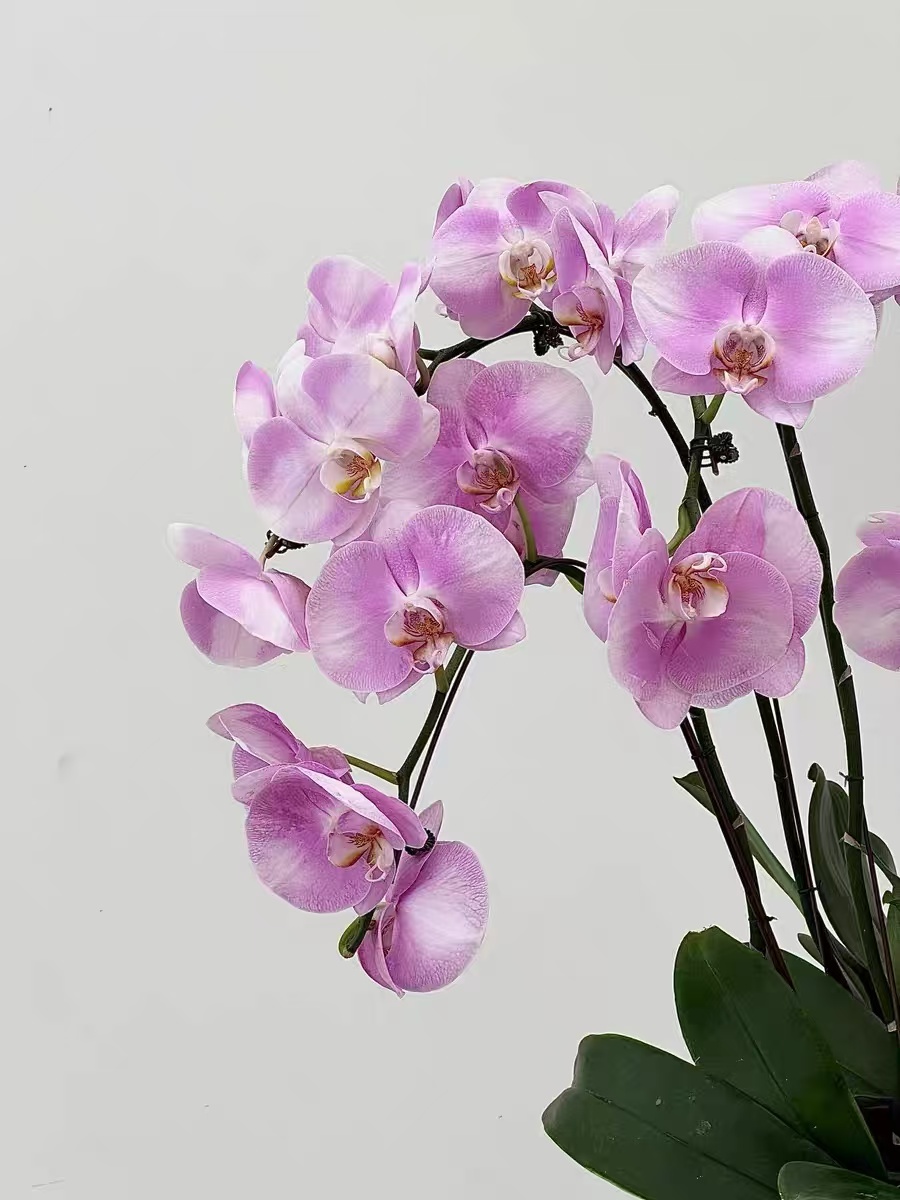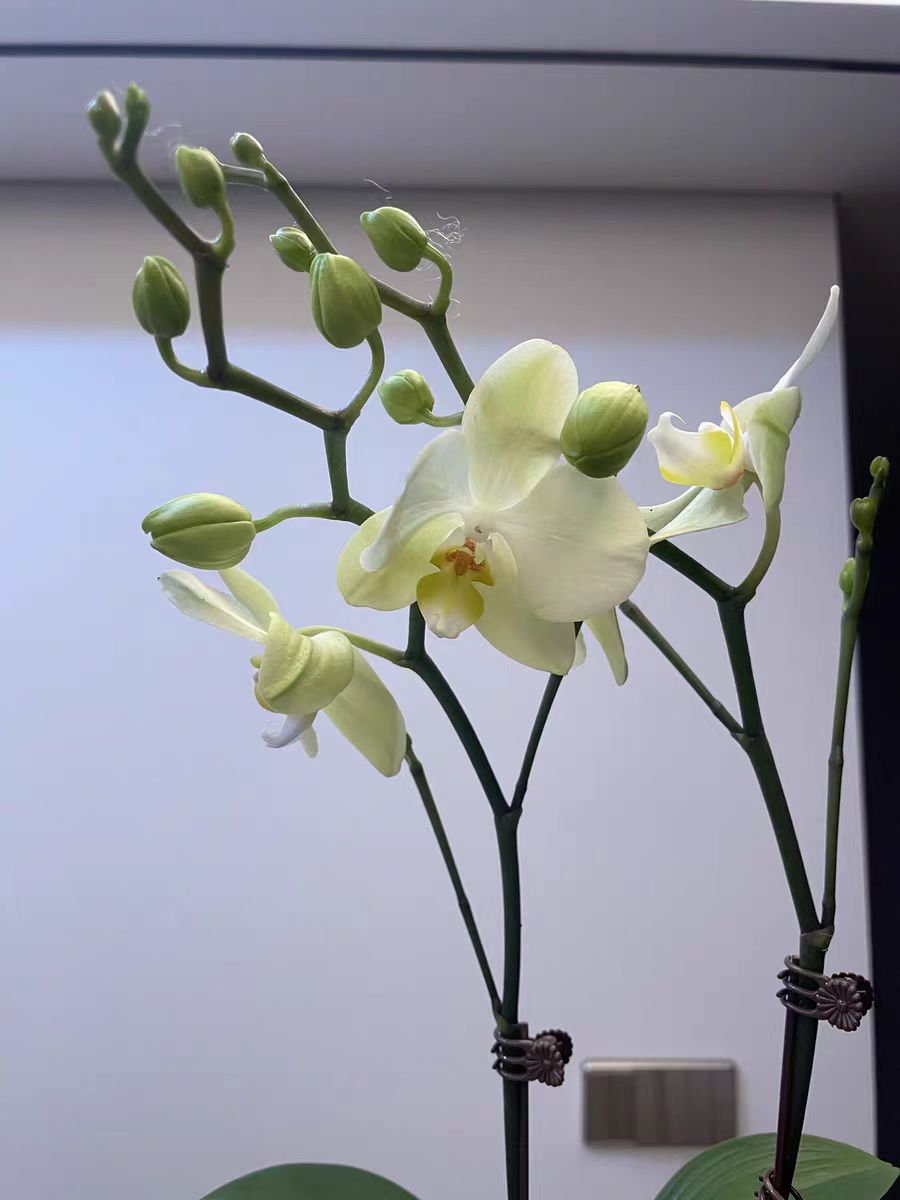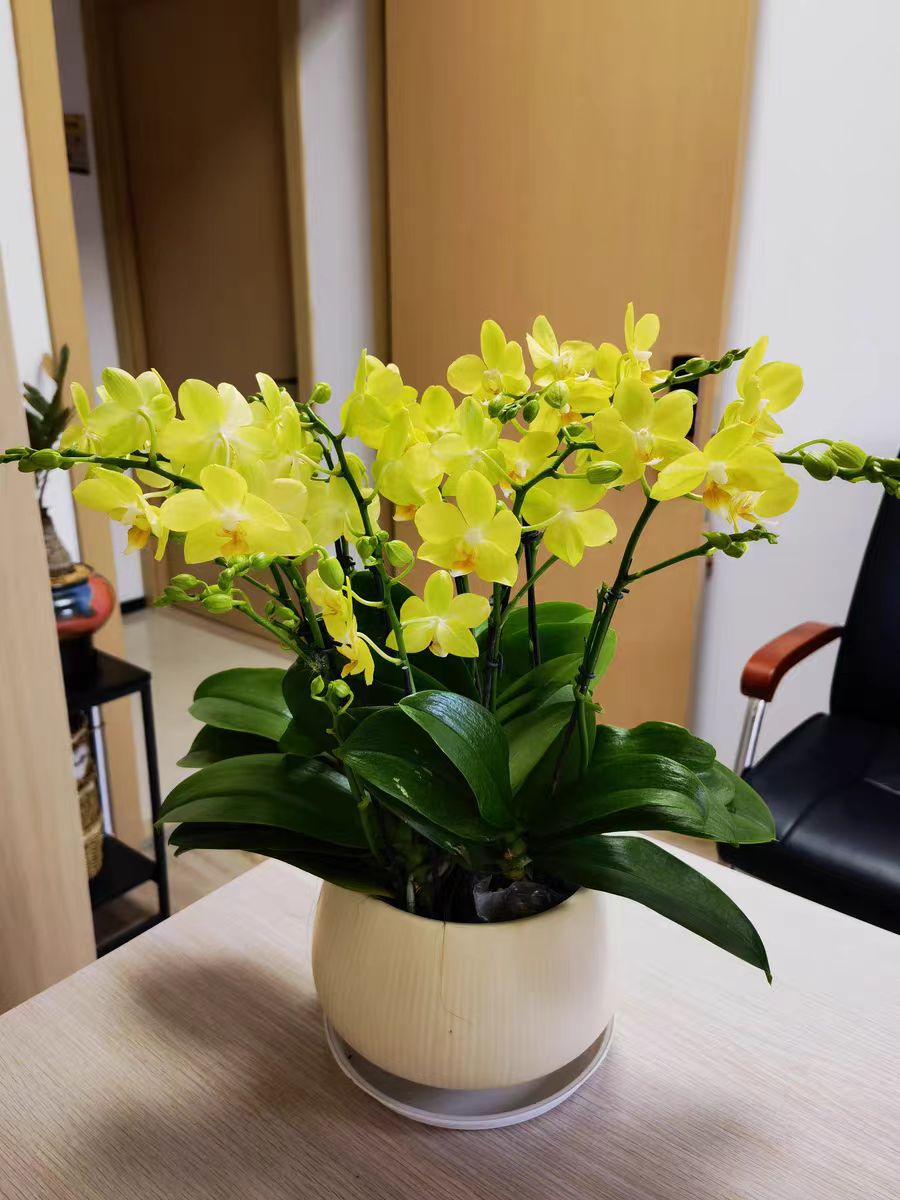As an elegant and beautiful flower, proper water management is crucial during the cultivation process of Phalaenopsis orchids. Both excessive and insufficient water can have adverse effects on the growth of Phalaenopsis orchids. So, how can we tell if Phalaenopsis orchids are lacking water and what should we do if they are damaged due to drought caused by water shortage?
How to tell if Phalaenopsis orchids are lacking water:
Observe the leaves: The condition of the leaves of Phalaenopsis orchids is the most direct indicator for judging whether they are lacking water. Under normal circumstances, the leaves are plump, emerald green and shiny. Once you find that the leaves become soft and limp, or even start to wrinkle or have yellow edges, this is the "thirsty" signal sent by the Phalaenopsis orchids. In addition, slightly soft old leaves are also one of the manifestations of water shortage.
Touch the potting soil: Gently insert your finger about 1 - 2 centimeters deep into the surface of the potting soil to feel its dryness or wetness. If the soil is already dry and there is no sense of moisture, then the Phalaenopsis orchids are likely to be lacking water. However, remember not to wait until the potting soil is completely dry before watering, as this will damage the roots of the Phalaenopsis orchids.
Check the roots and sphagnum moss: If the roots of Phalaenopsis orchids turn from green to white, or the sphagnum moss becomes brittle and the color inside the pot becomes lighter, these are also signals of water shortage. Meanwhile, if the whole pot becomes lighter, it indicates that the water has almost evaporated, and it's time to replenish water in a timely manner.
Observe the pot walls: The absence of water vapor on the pot walls is also one of the manifestations of insufficient water.
Treatment methods for Phalaenopsis orchids damaged by drought due to water shortage:
Timely watering: Once it is found that Phalaenopsis orchids are lacking water, water should be replenished immediately. However, when watering, be gentle and cautious. Do not pour a large amount of water at one time to avoid waterlogging at the roots and causing them to rot. You can use the "soaking pot method" or the way of "slow and continuous watering" to let the water slowly permeate into the roots and the soil. Meanwhile, pay attention to observing the soil humidity and keep it slightly moist.
Foliar spraying: Besides watering the roots, you can also supplement water for Phalaenopsis orchids by spraying on the leaves. Use a fine-mist spray bottle to gently spray on the surface of the leaves in the early morning or evening. This can not only increase the air humidity but also provide necessary water for the leaves. But remember not to spray water when the sun is strong, as the water droplets may focus the sunlight and burn the leaves.
Adjust the cultivation environment: To reduce water evaporation, you can move the Phalaenopsis orchids to a place with good ventilation but avoid being directly blown by cold wind; use sunshade nets or curtains to block part of the sunlight; place some water basins or humidifiers around to increase the air humidity, etc. These measures can effectively relieve the water shortage situation of Phalaenopsis orchids.
Pruning and treatment: If it is found that Phalaenopsis orchids are severely damaged by drought due to water shortage, with blackened leaf tips and limp leaves, there is a high probability of root rot. At this time, stop watering immediately and carefully dig out the plants to check the condition of the roots. Remove the rotten and hollow roots, only keep the healthy and strong parts, and then disinfect and handle them appropriately before replanting.
Through the above methods, we can effectively judge whether Phalaenopsis orchids are lacking water and take correct treatment measures when they are damaged by drought due to water shortage, so that the Phalaenopsis orchids can regain their vitality.
How to tell if Phalaenopsis orchids are lacking water?

Share with
Tagged in :




Leave a Reply